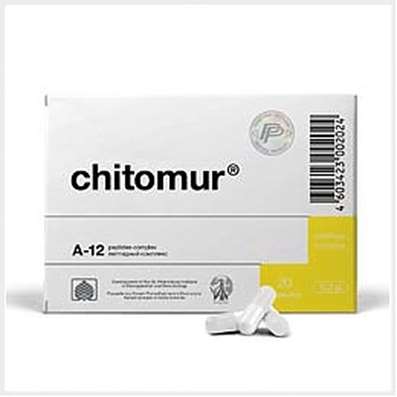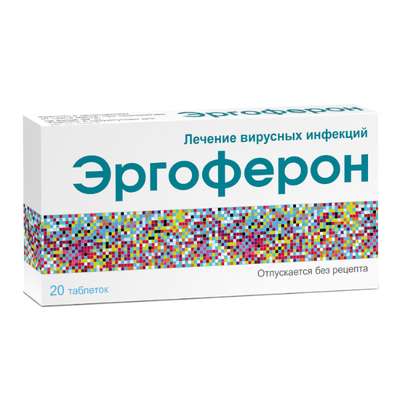Instruction for use: Fucidin H
I want this, give me price
Active substance Hydrocortisone + Fusidic acid
ATX code D07CA01 Hydrocortisone in combination with antibiotics
Pharmacological group
Glucocorticosteroids in combinations
Nosological classification (ICD-10)
L20 Atopic dermatitis
Itchy atopic eczema, Common neurodermatitis, Allergic skin diseases, Allergic skin diseases of non-infectious etiology, Allergic skin diseases of non-microbial etiology, Allergic skin diseases, Allergic skin lesions, Allergic manifestations on the skin, Allergic dermatitis, Allergic diathesis, Allergic itching dermatosis, Allergic Skin Disease, Allergic skin irritation, Dermatitis allergic, Atopic dermatitis, Dermatosis allergic, Diathesis exudative, Skin Allergic Disease, Skin allergic reaction to medicinal and chemical preparations, Skin reaction to medication, Skin and allergic disease, Acute eczema, Chronic atopic dermatitis, Exudative diathesis, Itching allergic dermatosis
L20.8 Other atopic dermatitis
Constitutional neurodermatitis, Chronic neurodermatitis, Restricted neurodermatitis, Allergic eczema, Atopic eczema, Children's eczema, Diffuse neurodermatitis, Neurodermatitis, Neurodermatitis diffuse, Neurodermatitis limited, Neurodermatitis, Dermatosis of a neurogenic origin
L21 Seborrheic dermatitis
Dermatitis seborrheic, Increased sebum separation, Seborrheic Eczema, Seborrheic dermatitis of the scalp, Seborrheic pyodermatitis, Seborrhea, Eczema seborrheic
L23 Allergic contact dermatitis
Allergic dermatitis, Purulent allergic dermatopathies, Contact allergic reaction, Contact allergic dermatitis, Photoallergic contact dermatitis
L30.0 Coin-like eczema
Dermatitis coiniform, Ordinary coin-like eczema, Eczema coin-like, Nummular dermatitis
L30.3 Infectious dermatitis
Microbial skin infections, Dermatitis with concomitant bacterial infections, Dermatitis in the presence of a bacterial infection or suspected of it, Infected eczema of external auditory canal, Secondarily infected dermatosis, Erythema migrans, Secondarily infected dermatoses , Dermatitis re-infected, Infectious dermatitis, Dermatitis infected, Dermatoses complicated by a secondary infection, Dermatoses complicated by primary and secondary infection, Dermatoses complicated by primary and / or secondary infection, Infected eczema, Infected dermatitis, Infected dermatosis, Migrating erythema, Microbial eczema, Chronic migratory erythema, Eczema is infected, Erythema Migrating, Bacterial dermatitis, Erythema migratory chronic, Superinfectant dermatitis, Necrolytic Migrating erythema
L30.8 Other specified dermatitis
Angiokeratoma, Angiokeratoma diffuse trunk, Darya's follicular dyskeratosis, Follicular dyskeratosis, Darya's disease, Enteropathic acrodermatitis, Skin aurantiases, Ochrodermatosis, Chronic dermatitis of the hand
Composition
Cream for external use 1 g
Active substances:
Fusidic acid hemihydrate (in terms of acid anhydrous) 20 mg
Hydrocortisone acetate 10 mg
Auxiliary substances: butylhydroxyanisole - 0.04 mg; Cetyl alcohol 111 mg; Glycerol 85% - 111 mg; Paraffin liquid (contains about 10 ppm alpha-tocopherol) - 111 mg; Potassium sorbate - 2.7 mg; Polysorbate 60 - 56 mg; Paraffin soft white (contains about 10 ppm alpha-tocopherol) - 56 mg; Hydrochloric acid 3M (maximum amount) - 3 mg; Purified water 519.6 mg
Description of dosage form
Cream: homogeneous, white.
pharmachologic effect
Pharmacological action - glucocorticoid, anti-inflammatory local, antibacterial local.
Pharmacodynamics
Combination drug for external use. Combines the anti-inflammatory and antipruritic effect of hydrocortisone with the antibacterial action of fusidic acid. Highly active against Staphylococcus spp., Especially Staphylococcus aureus and Staphylococcus epidermidis (including methicillin-resistant strains), Streptococcus spp., Neisseria spp., Clostridium spp., Nocardia asteroides, Enterococcus spp., Bacteroides spp., Mycobacterium tuberculosis, Mycobacterium leprae and Corynebacterium Minutissimum. Antibacterial activity of fusidic acid does not decrease in the presence of hydrocortisone.
Pharmacokinetics
The skin gets 2% of the active substances from the applied amount of the drug. At external application system absorption is low.
Fusidic acid. It is excreted mainly with bile, and only a small amount is excreted in the urine.
Hydrocortisone. Absorbed hydrocortisone is rapidly metabolized and excreted in the urine.
Indications
Treatment of atopic dermatitis with infectious complications caused by pathogens sensitive to fusidic acid.
Contraindications
Hypersensitivity to fusidic acid / sodium fusidate, hydrocortisone acetate or other components of the drug.
Due to the content of GCS, the following conditions and diseases:
Primary skin infections caused by bacteria, fungi, or viruses (such as the herpes or chicken pox virus);
Cutaneous manifestations of tuberculosis or syphilis;
Perioral dermatitis and rosacea;
Children under 2 years.
pregnancy and lactation
Preclinical studies and long-term clinical experience indicate the absence of embryotoxic and teratogenic effects of fusidic acid. Local use of corticosteroids in pregnant animals led to the appearance of fetal anomalies, although the significance of this phenomenon in relation to humans is unclear.
Data obtained during pregnancy show no serious adverse effects on the fetus and the newborn. However, it is not recommended during pregnancy to exercise excessive cream (that is, for a long time or in volumes more than 100 g per week) because of the presence of hydrocortisone in the composition of Fucidine® H.
With external application of fusidic acid and hydrocortisone acetate, penetration into breast milk is unlikely due to low systemic adsorption and no impact on children breastfed is expected. Cream Fucidin® H may be given during breastfeeding, however, when applied externally to the skin of the nipple, the nipple surface must be thoroughly cleaned from any traces of cream before feeding.
Side effects
The following are data on adverse adverse reactions, depending on the frequency of occurrence: very often - ≥1 / 10; Often - ≥1 / 100, <1/10; Infrequently - ≥1 / 1000, <1/100; Rarely - ≥1 / 10000, <1/1000; Very rarely - <1/10000.
From the immune system: very rarely - systemic allergic reactions.
From the skin and subcutaneous tissues: infrequently - skin irritation, burning sensation, tingling sensation in the place of application of the drug; Frequency unknown - rash, allergic contact dermatitis, depigmentation.
Associated with the presence in the SCS (glucocorticosteroids): skin atrophy, telangiectasia and striae (especially with prolonged use), folliculitis, hypertrichosis, perioral dermatitis, allergic contact dermatitis, depigmentation and suppression of the adrenal cortex.
Interaction
Not found.
Dosing and Administration
Outwardly.
Adults and children over 2 years. Apply to the affected area of the skin with a thin layer 3 times a day. The course of treatment - 2 weeks.
Overdose
It is unlikely.
special instructions
It is necessary to avoid contact of Fucidine® H cream with open wounds and mucous membranes. With caution, apply near eyes; Getting the drug in the eye can lead to the appearance of glaucoma.
Should be avoided long-term external application of GCS, t. This can lead to suppression of adrenal function even at low systemic absorption. After prolonged local treatment of SCS, atrophic changes on the face and, to a lesser extent, on other parts of the body can occur.
Fucidin® H cream contains butyl hydroxy anisole and cetyl alcohol, which can cause local skin reactions (such as contact dermatitis). Butylhydroxyanisole can also cause irritation of the eyes and mucous membranes.
Fusidic acid, like all antibiotics, with prolonged or repeated use may increase the risk of developing antibiotic resistance. The use of fixed combinations of SCS with an antibiotic should not exceed 2 weeks, because SCS can mask symptoms of infection or hypersensitivity reactions. With persistence of bacterial infection, treatment with systemic drugs should be started.
Influence on the ability to drive vehicles and work with machinery. Influence on ability to drive vehicles and mechanisms is not revealed.
Form of issue
Cream for external use. In an aluminum tube sealed with a membrane of aluminum foil, with a screwed PE (polyethylene) cover, 15 g. 1 tube in a cardboard bundle.
Conditions of leave from pharmacies
On prescription.
storage Conditions
At a temperature not higher than 25 ° C.
Keep out of the reach of children.
Shelf life
3 years.
Do not use after the expiry date printed on the package.

 Cart
Cart





